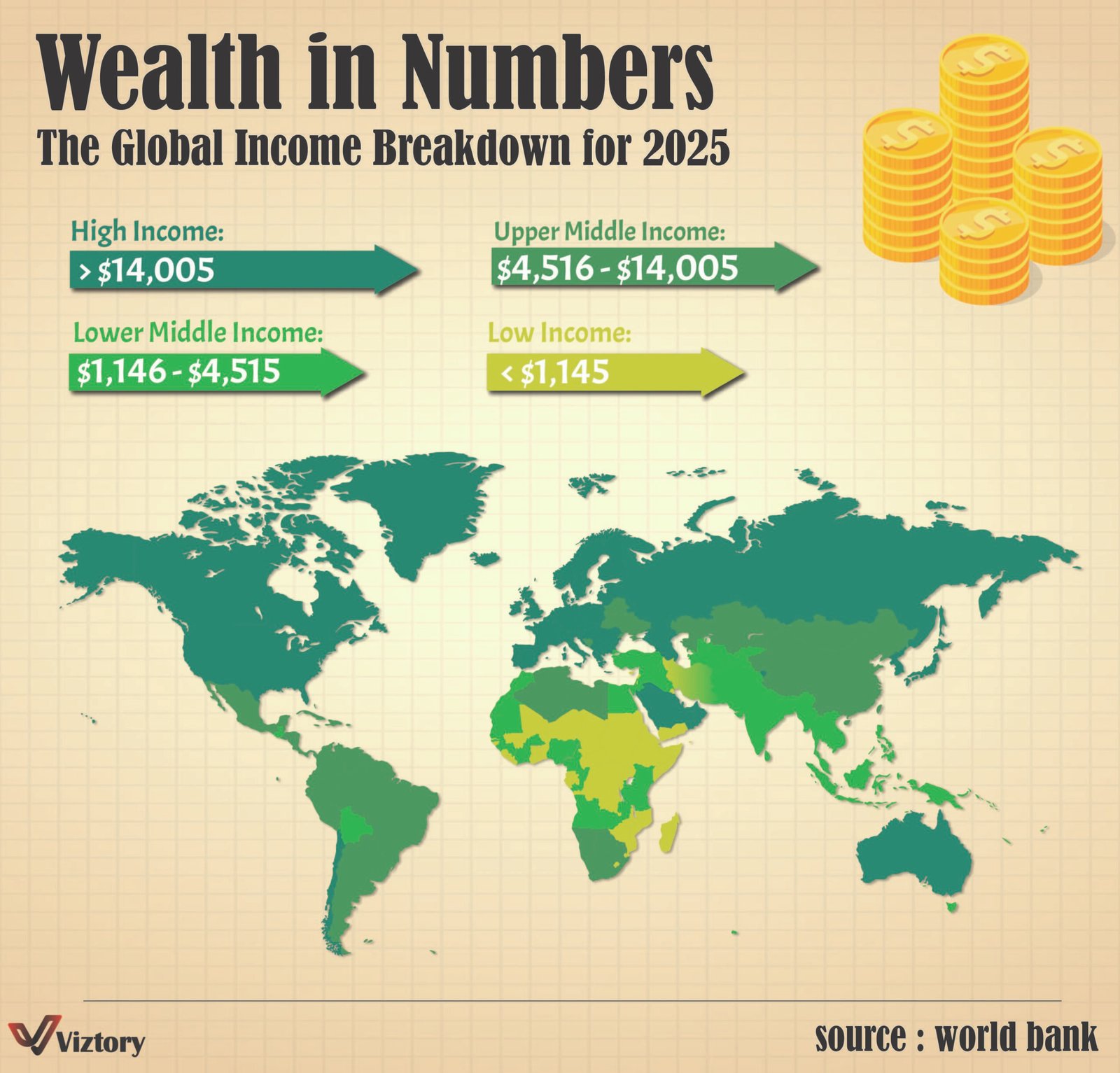Wealth in Numbers The Global Income Breakdown for 2025
Introduction
As we approach 2025, income inequality remains one of the most pressing global challenges. The visual titled “Wealth in Numbers: The Global Income Breakdown for 2025” provides a clear and impactful illustration of how countries are categorized based on Gross National Income (GNI) per capita. This classification, sourced from the World Bank, divides the world into four income groups: high income, upper middle income, lower middle income, and low income.
Body
According to the image, income levels are grouped as follows:
- High Income: More than $14,005
- Upper Middle Income: $4,516 – $14,005
- Lower Middle Income: $1,146 – $4,515
- Low Income: Less than $1,145
The map uses a color-coded system to represent these income levels across different regions. Countries in North America, Western Europe, and parts of East Asia fall under the high-income category. In contrast, large portions of Sub-Saharan Africa are shown in yellow, indicating low-income status. South Asia and parts of Latin America are categorized as lower and upper middle income, reflecting their transitional economic status.
This global income visualization not only highlights economic diversity but also the geographic patterns of wealth distribution. Developed nations maintain economic dominance, while developing and underdeveloped countries continue to face significant financial challenges.
Analysis
The image sheds light on the persistent economic gap between countries. While nations like the United States, Germany, and Australia enjoy high-income status, many African and some South Asian countries still struggle with poverty and limited economic growth. The reasons behind this disparity are complex — ranging from historical colonization, governance issues, lack of technological advancement, and unequal access to global markets.
By merging this insight with the Money theme, we can understand how income categorization directly affects a country’s ability to invest in healthcare, education, infrastructure, and innovation. Income is not just a number; it’s a powerful determinant of living standards and future development potential.
Conclusion
The visualization “Wealth in Numbers” serves as a compelling reminder of the global income divide. As we move further into 2025, these numbers emphasize the urgent need for global cooperation, policy reform, and investment in sustainable development — especially in low and middle-income countries. Reducing the income gap is essential not only for fairness but also for global stability and progress.

